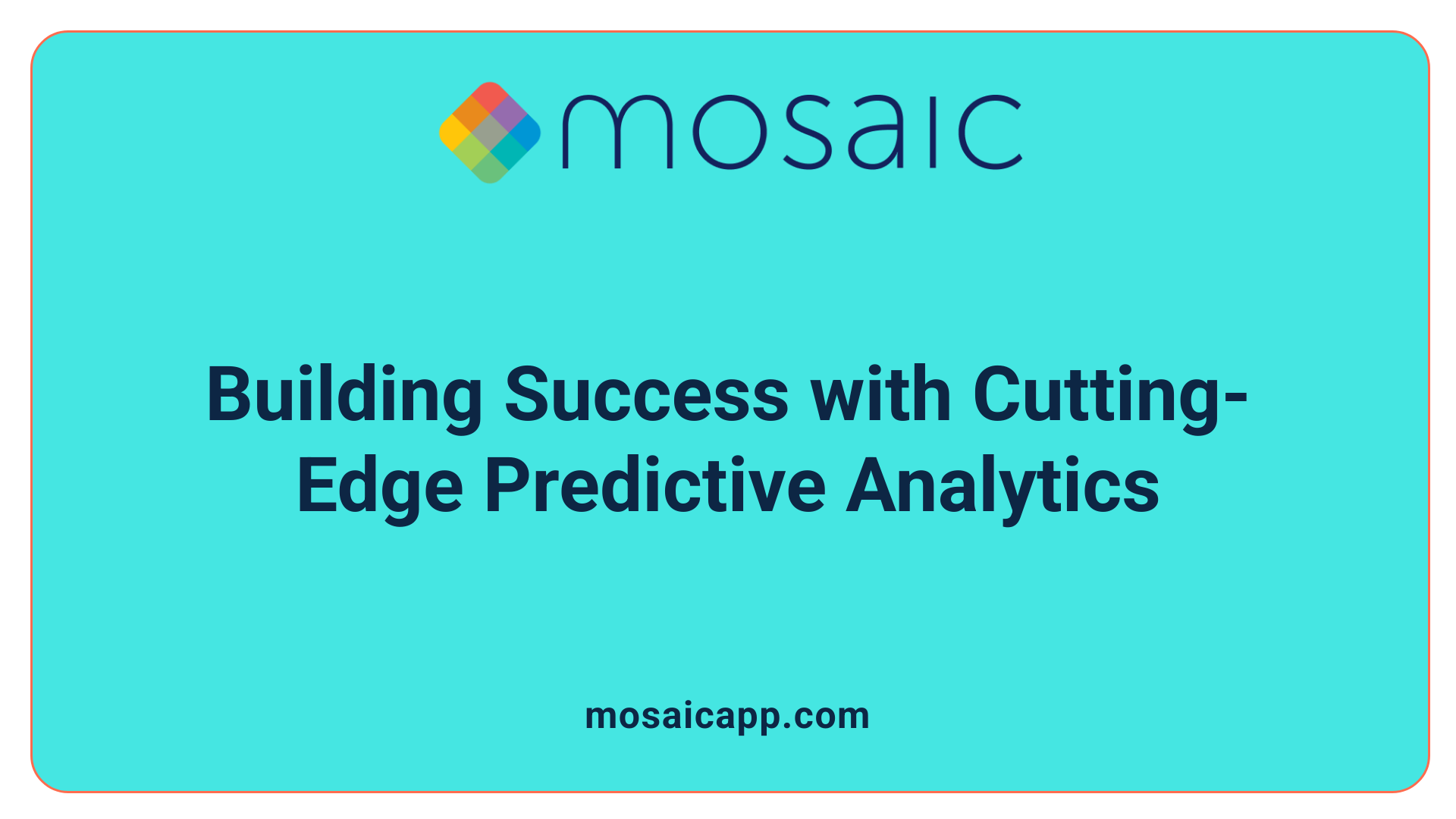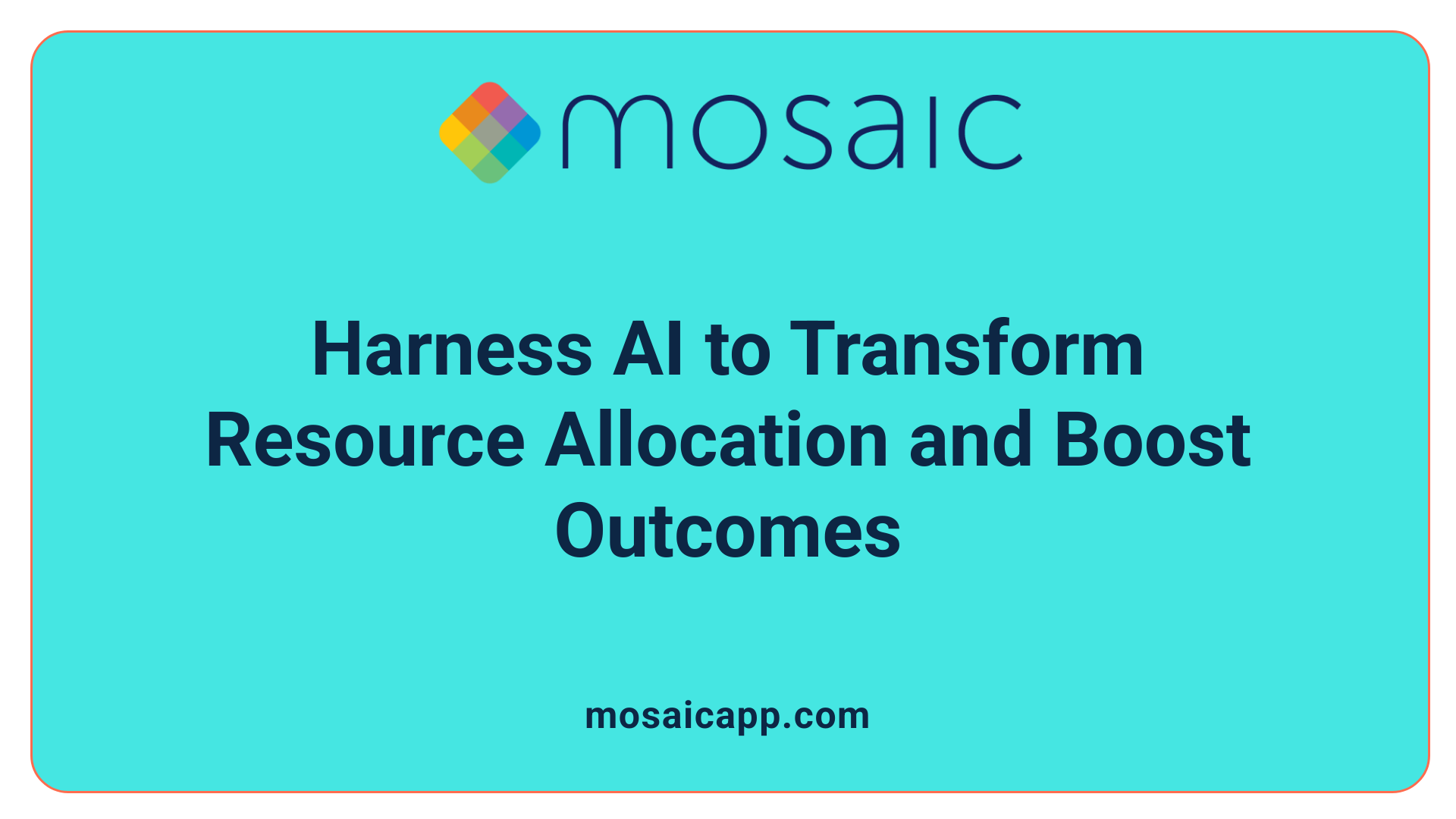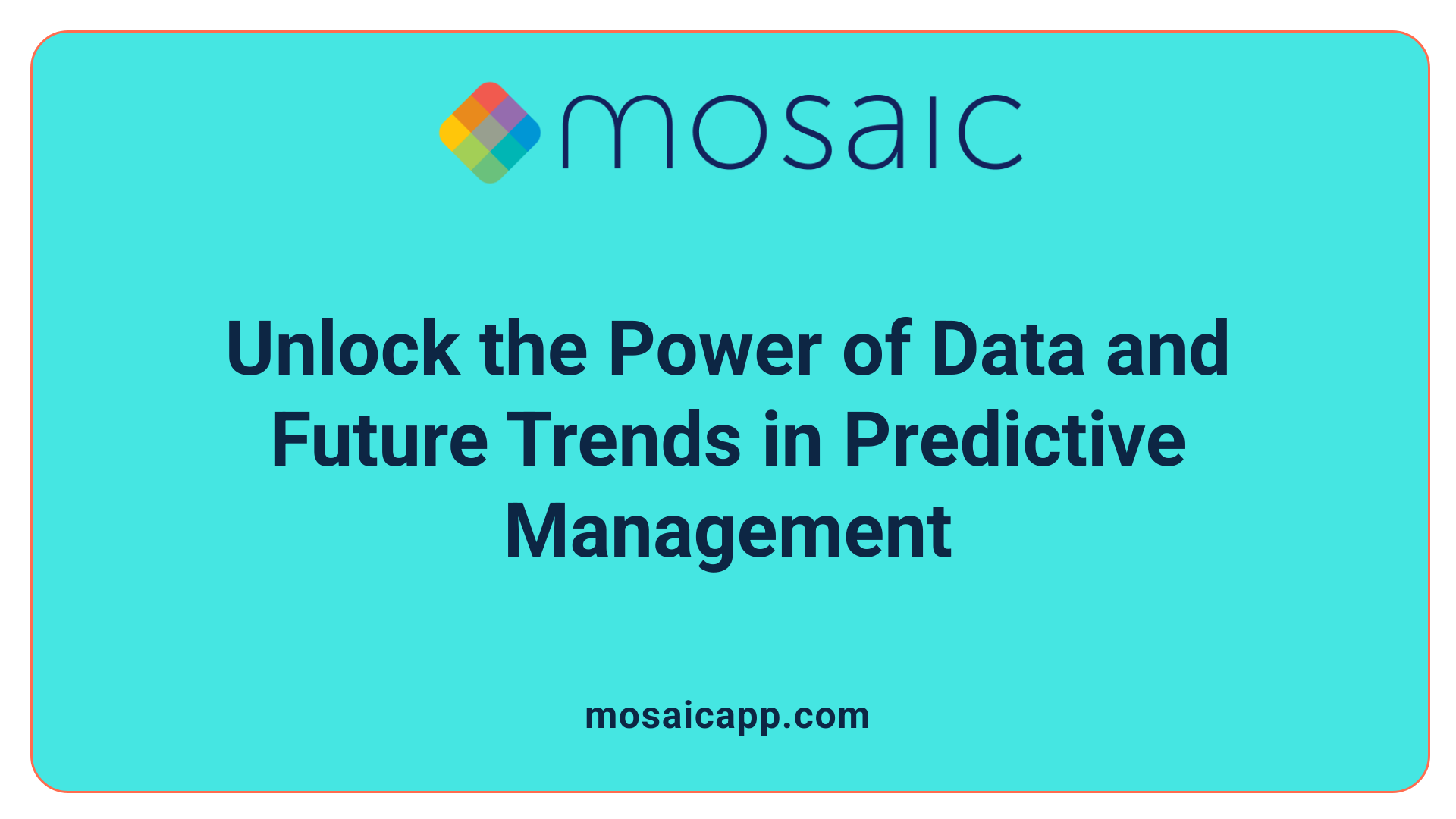Revolutionizing Project Margin Optimization with Predictive Techniques
In the rapidly evolving landscape of project management, organizations are increasingly turning to predictive allocation and data analytics to boost profitability. These advanced techniques enable teams to forecast resource needs, identify potential risks, and make informed decisions proactively. This article explores how predictive analytics and AI-driven tools are transforming project management practices, providing measurable benefits such as increased efficiency, cost savings, and higher project success rates.
The Foundation of Predictive Analytics in Project Management

Overview of predictive analytics and its core techniques
Predictive analytics in project management involves using historical data, statistical algorithms, and machine learning models to forecast future project outcomes. This approach helps teams proactively address potential issues, optimize resource utilization, and improve decision-making.
Core techniques include machine learning platforms like IBM Watson, statistical methods such as regression analysis, Monte Carlo simulations, and real-time dashboards that visualize ongoing project data. These tools analyze complex datasets to identify patterns, trends, and potential risks, giving managers a clearer picture of project trajectories.
Machine learning models can process vast amounts of information, learning from past projects to predict future challenges or opportunities. Monte Carlo simulations, for example, run multiple scenarios to assess the likelihood of project delays or budget overruns, enabling teams to plan contingency measures.
Importance of historical data, statistical models, and machine learning
Historical data forms the backbone of predictive analytics, offering insights into past performance, resource use, and project bottlenecks. This information helps create accurate forecasts and identify key factors influencing project success.
Statistical models, like regression analysis, analyze relationships between project variables such as scope changes, labor hours, and costs. These models allow project managers to estimate how altering one factor might impact overall project performance.
Machine learning further enhances predictive capabilities by uncovering complex relationships within the data that traditional models might miss. It adapts and improves as more data becomes available, leading to increasingly precise predictions.
For example, by analyzing past project data, predictive models can forecast potential delays or cost overruns with up to 85% accuracy. This high level of precision empowers teams to allocate resources more effectively and make adjustments before problems become critical.
How is project margin forecasted using predictive strategies?
To calculate, track, and forecast project margins, organizations employ a blend of quantitative and qualitative techniques. Statistical methods such as moving averages, exponential smoothing, and regression analysis analyze historical financial data to project future margins.
Causal models incorporate external economic and market factors, refining predictions especially in volatile environments. Qualitative methods—including expert judgment, market research, and consensus panels—supplement quantitative models, especially when data is scarce or uncertain.
Modern financial planning tools integrate these techniques, allowing ongoing scenario planning and reforecasting throughout a project’s lifecycle. Frequent updates to actuals versus plan enable project teams to make timely adjustments, ensuring margins remain aligned with strategic goals.
| Technique | Explanation | Application Example |
|---|---|---|
| Regression Analysis | Statistical modeling to identify relationships between variables | Forecasting project costs based on scope changes |
| Monte Carlo Simulations | Running multiple scenarios to assess risk and uncertainty | Evaluating delay probabilities due to weather or supply delays |
| Moving Averages & Smoothing | Analyzing trends in historical data over time | Tracking weekly project expenses for better forecasting |
| Expert Judgment | Qualitative insights from industry experts | Adjusting predictions based on market or economic outlooks |
By combining these techniques, project managers can obtain a comprehensive view of project margins, enabling better financial control and strategic planning.
Impact of AI on Resource Allocation and Project Outcomes

How does AI influence real-time resource monitoring and adjustments?
AI-driven tools constantly track resource utilization across projects, providing live updates that enable managers to make immediate adjustments. This proactive approach helps keep projects within budget and schedule, reducing delays and unexpected costs.
With real-time data, teams can quickly identify resource bottlenecks or underutilization. For example, if a particular task is lagging due to insufficient staffing, AI can suggest reallocating personnel to balance workloads more effectively. This continual monitoring allows for adaptive resource management, which is critical for maintaining project momentum.
How does machine learning analyze datasets for optimal resource strategies?
Machine learning examines large, complex datasets—such as project schedules, team performance, and historical outcomes—to detect patterns and emerging trends. These insights guide decision-makers in crafting resource allocation plans that are tailored and effective.
By understanding factors that influence project success, organizations can prioritize high-impact tasks, predict potential delays, and plan contingencies accordingly. For instance, a construction firm might use machine learning to assess weather patterns and supply chain issues in order to adjust project timelines proactively.
How does AI automate routine management tasks?
Automation is a significant advantage of AI in project management. Routine activities like scheduling, progress reporting, and resource allocation updates can be handled automatically by AI systems. This reduces manual workload, minimizes human error, and accelerates workflow.
Automated alerts and dashboards facilitate quick decision-making, keeping everyone informed about resource status and project health. With less time spent on administrative tasks, project teams can focus on strategic goals and problem-solving, ultimately driving higher productivity.
Why is AI-driven analytics vital for project success?
AI enhances planning accuracy by forecasting project needs and risks with greater precision. This predictive capacity helps in allocating the right resources at the right time, avoiding costly delays and overuse.
Furthermore, AI supports scenario analysis enabling teams to test different approaches before implementation, preparing them better for uncertainties. By integrating AI tools into resource management, organizations increase efficiency, cut costs, and improve overall project outcomes.
| Aspect | Benefits | Implementation Tips |
|---|---|---|
| Real-time Monitoring | Immediate adjustments, better budget control | Use integrated dashboards, set alert thresholds |
| Data Analysis | Informed decision-making, trend identification | Invest in machine learning platforms, ensure data quality |
| Automation | Reduced manual work, faster reporting | Automate routine tasks, train staff to interpret AI outputs |
Search on more about this topic
Find out more about how AI-driven resource management is transforming project success by searching "AI-driven resource management in project management." This exploration will reveal new trends, technologies, and best practices in this evolving field.
Methodologies Behind Predictive Allocation for Profit Maximization

What mechanisms and methodologies behind predictive allocation for improving project margins?
Predictive allocation in project management is based on a variety of data-driven techniques that help optimize how resources are distributed to maximize profitability. These methods include statistical analysis, machine learning, and simulation models.
Statistical techniques such as regression analysis analyze historical data to identify relationships between different project variables, like costs and durations. This helps forecast future project outcomes accurately.
Machine learning algorithms, like decision trees and neural networks, learn from large datasets to recognize patterns that indicate potential project risks, delays, or cost overruns. They enable proactive adjustments, reducing unexpected expenses.
Simulations, especially Monte Carlo methods, run numerous scenarios based on input uncertainties, predicting the likelihood of different outcomes. These simulations inform risk management strategies and resource planning.
Using these methodologies, organizations can anticipate potential bottlenecks, resource shortages, or scope changes before they happen, leading to better decision-making.
Tools supporting predictive modeling
Many advanced tools facilitate the implementation of these methodologies. Examples include IBM Watson, Google Cloud AI, and Minitab, which offer platforms for building and refining predictive models.
Crystal Ball by Oracle is another popular tool used for Monte Carlo simulations and risk analysis, providing visual insights into potential project variations.
These tools integrate machine learning and statistical analysis, making it easier for project managers to incorporate predictive insights into everyday decision processes.
Implementation best practices
To successfully adopt predictive allocation, organizations should focus on data quality—ensuring that input data is accurate and up-to-date.
Integrating analytics into decision workflows and fostering a data-driven culture are crucial. Regularly training teams on using predictive tools and continuously evaluating the performance of models helps maintain accuracy.
It is essential to start with pilot projects, learn from initial results, and scale up gradually. Collaboration among cross-disciplinary teams improves the relevance and effectiveness of predictive models.
By following these best practices, companies can enhance resource utilization, reduce risks, and drive higher project margins through smarter, data-backed decisions.
Tools and Techniques for Effective Margin Forecasting
What techniques are used to calculate, track, and forecast project margins using predictive strategies?
Predictive strategies for project margin forecasting combine both quantitative and qualitative methods. Quantitative techniques involve statistical models such as moving averages, exponential smoothing, and regression analysis. These methods analyze past financial and operational data to project future profit margins, providing a data-driven foundation for decision-making.
Causal models are also employed to relate project variables to external factors like market trends and economic conditions. This approach helps improve accuracy, especially in dynamic and uncertain environments.
Qualitative methods include expert judgment, market research, and consensus panels. These approaches are valuable when data is limited or incomplete and serve to supplement quantitative models.
Modern financial planning and analysis (FP&A) tools, particularly those integrated with artificial intelligence, play a crucial role. They automate data analysis, support scenario planning, and enable ongoing reforecasting. This dynamic adjustment allows project managers to respond proactively to changing conditions and maintain accurate margin predictions throughout a project's lifecycle.
In summary, combining statistical techniques with expert insights and leveraging FP&A tools ensures more precise and adaptable project margin forecasts, ultimately leading to better financial performance and strategic decision-making.
Application of Predictive Project Management Across Industries
How is predictive project management used in different sectors to boost profitability?
Predictive project management plays a transformative role across various industries by using sophisticated analytics, machine learning, and historical data to anticipate risks, streamline resources, and schedule projects more accurately.
In finance, these methods support risk assessment, fraud detection, and investment analysis. Healthcare environments leverage predictive models to forecast disease outbreaks and optimize patient care, reducing costs and improving outcomes.
Manufacturing sectors utilize predictive analytics for scheduled maintenance, quality control, and minimizing production downtime, which directly saves money and enhances efficiency.
Retail and marketing industries rely heavily on demand forecasting, customer segmentation, and personalized campaigns enabled by data-driven insights. These strategies help companies stock appropriately, target customers effectively, and maximize sales.
Supply chains benefit from predictive analytics by identifying potential disruptions early, thus allowing organizations to adjust logistics proactively. This results in less waste, lower costs, and more reliable delivery schedules.
| Industry | Applications | Impact |
|---|---|---|
| Finance | Fraud detection, risk modeling | Reduces financial losses, enhances security |
| Healthcare | Disease prediction, patient outcomes | Improves care, cuts costs |
| Manufacturing | Maintenance schedules, QA | Cuts downtime, saves costs |
| Retail/Marketing | Demand forecasting, campaign targeting | Increases sales, improves customer satisfaction |
| Logistics | Disruption prediction, route optimization | Cost savings, reliable delivery |
By adopting predictive project management, industries are better equipped to anticipate challenges, make informed decisions, and improve overall profitability. The ability to foresee risks and opportunities leads to more efficient, cost-effective, and sustainable project execution, helping organizations stay competitive in a rapidly changing landscape.
Key Takeaways and Future Trends in Predictive Project Management

What are the benefits of using predictive allocation and data analytics in project management?
Implementing predictive allocation and data analytics significantly enhances project management efficiency. These approaches offer foresight by analyzing historical data and current project metrics to forecast future resource needs and potential issues.
One major benefit is improved planning accuracy. By leveraging advanced algorithms like machine learning and statistical models such as regression analysis and Monte Carlo simulations, managers can anticipate delays, budget overruns, and bottlenecks before they occur.
Real-time monitoring tools enable immediate adjustments, keeping projects aligned with budgets and schedules. This dynamic responsiveness reduces risks, improves resource utilization, and supports timely project completion.
Data-driven insights facilitate smarter decision-making. Managers can reallocate resources to high-priority tasks, identify skill gaps, and optimize project timelines proactively.
Additionally, predictive analytics contribute to cost savings by preventing overstocking or underspending, as well as improving stakeholder communication and team morale.
What are some emerging trends like IoT, AI, and real-time collaboration?
The future of predictive project management is poised for exciting developments. Increased integration of Internet of Things (IoT) devices will enable seamless data flow from physical assets, providing real-time updates on resource status and environmental conditions.
Artificial Intelligence (AI) and machine learning will continue to advance, offering more accurate forecasts and autonomous decision-making capabilities. Cloud platforms will support scalable, accessible analytics tools, fostering collaboration across teams regardless of location.
Enhanced real-time collaboration tools—often powered by AI—will allow teams to react instantly to emerging issues and make data-driven decisions swiftly. Technologies like VR/AR are also emerging, facilitating immersive project planning and risk assessment.
What KPIs and success metrics should be tracked?
To gauge the effectiveness of predictive project management, organizations should monitor several KPIs.
| KPI | Description | Purpose |
|---|---|---|
| Forecast accuracy | How closely predictions match actual outcomes | Measure effectiveness of predictive models |
| Resource utilization | Percentage of resources effectively used | Ensure optimal allocation |
| Cost variance | Difference between budgeted and actual costs | Control expenses and prevent overruns |
| Schedule variance | Difference from planned timeline | Maintain project schedules |
| Risk mitigation rate | Percentage of risks identified and addressed early | Improve proactive management |
| Stakeholder satisfaction | Feedback from clients and team members | Ensure project success and buy-in |
Tracking these metrics helps refine models, improve decision-making, and ensure the ongoing success of predictive project management strategies.
Strategic Integration for Maximum Impact
Incorporating predictive analytics and AI-driven tools into project management is no longer optional but essential for organizations seeking to optimize margins and stay ahead in competitive markets. These technologies facilitate proactive planning, real-time adjustments, and smarter resource utilization, thereby significantly increasing the likelihood of project success and profitability. As industries continue to adopt emerging trends such as IoT integration, natural language processing, and cloud computing, the role of predictive analytics will only grow, transforming traditional project management into a strategic, data-driven discipline. Organizations that invest in robust predictive capabilities will be better positioned to navigate uncertainties, improve efficiency, and maximize financial returns, truly demonstrating how predictive allocation fosters superior project margins.
References
- Predictive Analytics in Project Management: A Game ...
- Leveraging Predictive Analytics for Smarter Project Planning
- Why Use Predictive Analytics in Project Management ...
- Predictive Project Management: Enhance Efficiency
- Optimizing Sales Margins with AI-Driven Predictive Analytics
- How does predictive analytics improve resource allocation?
- How to Calculate, Track and Forecast Project Margin for ...


